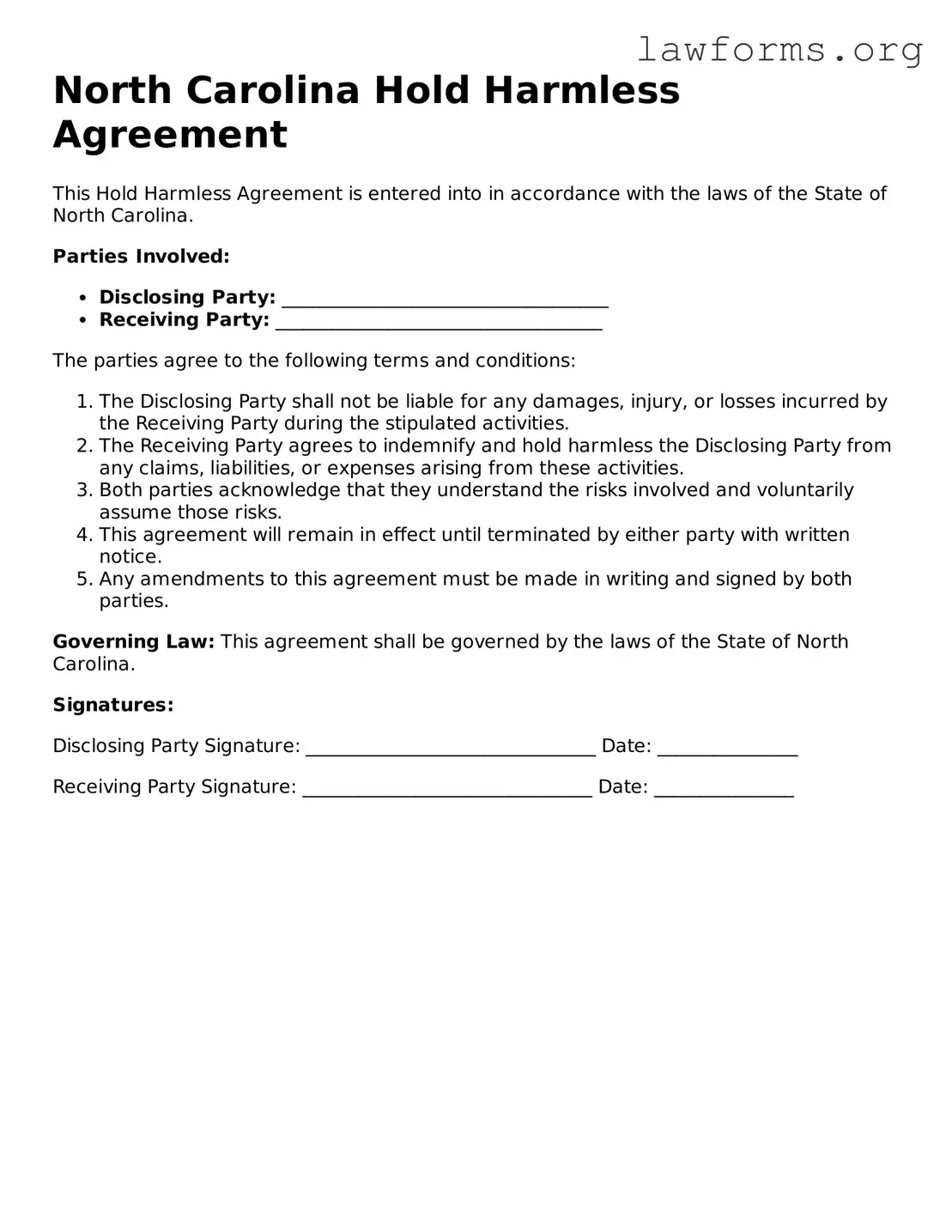North Carolina Hold Harmless Agreement
This Hold Harmless Agreement is entered into in accordance with the laws of the State of North Carolina.
Parties Involved:
- Disclosing Party: ___________________________________
- Receiving Party: ___________________________________
The parties agree to the following terms and conditions:
- The Disclosing Party shall not be liable for any damages, injury, or losses incurred by the Receiving Party during the stipulated activities.
- The Receiving Party agrees to indemnify and hold harmless the Disclosing Party from any claims, liabilities, or expenses arising from these activities.
- Both parties acknowledge that they understand the risks involved and voluntarily assume those risks.
- This agreement will remain in effect until terminated by either party with written notice.
- Any amendments to this agreement must be made in writing and signed by both parties.
Governing Law: This agreement shall be governed by the laws of the State of North Carolina.
Signatures:
Disclosing Party Signature: _______________________________ Date: _______________
Receiving Party Signature: _______________________________ Date: _______________
